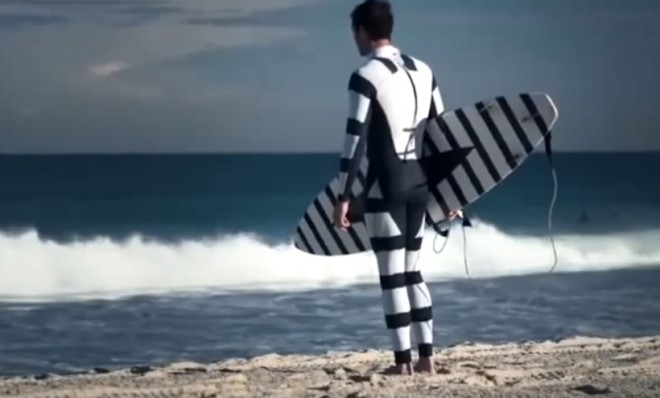WATCH: These wetsuits make you invisible to sharks
Surf's up

Although still incredibly rare in the United States, shark attacks reached decade-high levels in 2012, according to a University of Florida study. Including data from Hawaii and Puerto Rico, 53 attacks occurred in U.S. waters, with a fatality rate of just two percent.
To be clear, you're still more likely to die from a lightning strike.
It's a different story in other parts of the world, particularly along Western Australia, where the surf is pristine and great white sharks are abundant. Although we're still a far greater threat to them than they are to us — practices like shark finning have reduced the animals to dangerously low levels around the globe — a series of high-profile incidents have painted the area as a hotbed for attacks.
The Week
Escape your echo chamber. Get the facts behind the news, plus analysis from multiple perspectives.

Sign up for The Week's Free Newsletters
From our morning news briefing to a weekly Good News Newsletter, get the best of The Week delivered directly to your inbox.
From our morning news briefing to a weekly Good News Newsletter, get the best of The Week delivered directly to your inbox.
For surfers, international or otherwise, the allure of a shark-repellant wetsuit has always been something of a Holy Grail, if only for the peace of mind. Scientists from the University of Western Australia, working with suit designers at Shark Attack Mitigation Systems (SAMS), have revealed two new "shark-proof" wetsuits designed to make you look less like a tasty shark-snack: One makes you "invisible" to their eyes, while the other mimics the pattern of a toxic fish the predators are known to avoid.
Sharks actually have amazing vision, despite what you may have heard. Although their visual systems are similar to those of humans, their eyes actually have stacked duplex retinas that allow them to see prey clearly even in dark, murky waters. The "invisibility suit," according to researchers, takes advantage of the "upper limits on spatial resolving power/visual acuity of the eye in pelagic sharks" — a kind of blind spot — and effectively renders the swimmer camouflaged.
The idea behind the other shark-repelling suit has actually been around for awhile. The black and white stripes of the poisonous pilotfish have long been known as a biological deterrent. In fact, the fish are known to spend most of their lives alongside sharks.
And even though your safety isn't guaranteed with either wetsuit, it sure beats anything that makes you look like a hapless seal.
A free daily email with the biggest news stories of the day – and the best features from TheWeek.com
-
 ‘Jumping genes': How polar bears are rewiring their DNA to survive the warming Arctic
‘Jumping genes': How polar bears are rewiring their DNA to survive the warming ArcticUnder the radar The species is adapting to warmer temperatures
-
 January’s books feature a revisioned classic, a homeschooler's memoir and a provocative thriller dramedy
January’s books feature a revisioned classic, a homeschooler's memoir and a provocative thriller dramedyThe Week Recommends This month’s new releases include ‘Call Me Ishmaelle’ by Xiaolu Guo, ‘Homeschooled: A Memoir’ by Stefan Merrill Block, ‘Anatomy of an Alibi’ by Ashley Elston and ‘Half His Age’ by Jennette McCurdy
-
 Venezuela’s Trump-shaped power vacuum
Venezuela’s Trump-shaped power vacuumIN THE SPOTLIGHT The American abduction of Venezuelan President Nicolás Maduro has thrust South America’s biggest oil-producing state into uncharted geopolitical waters